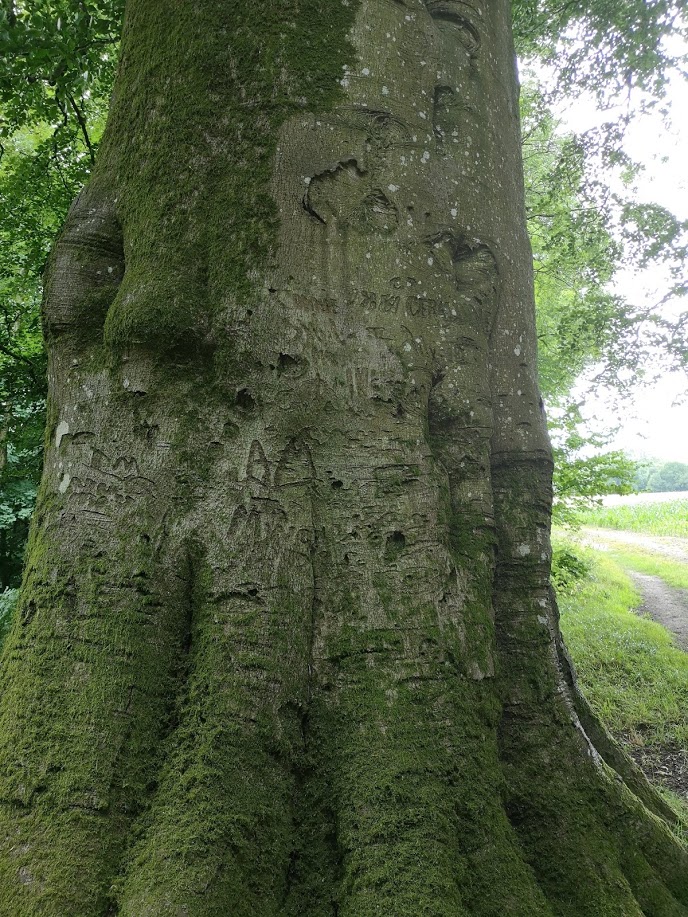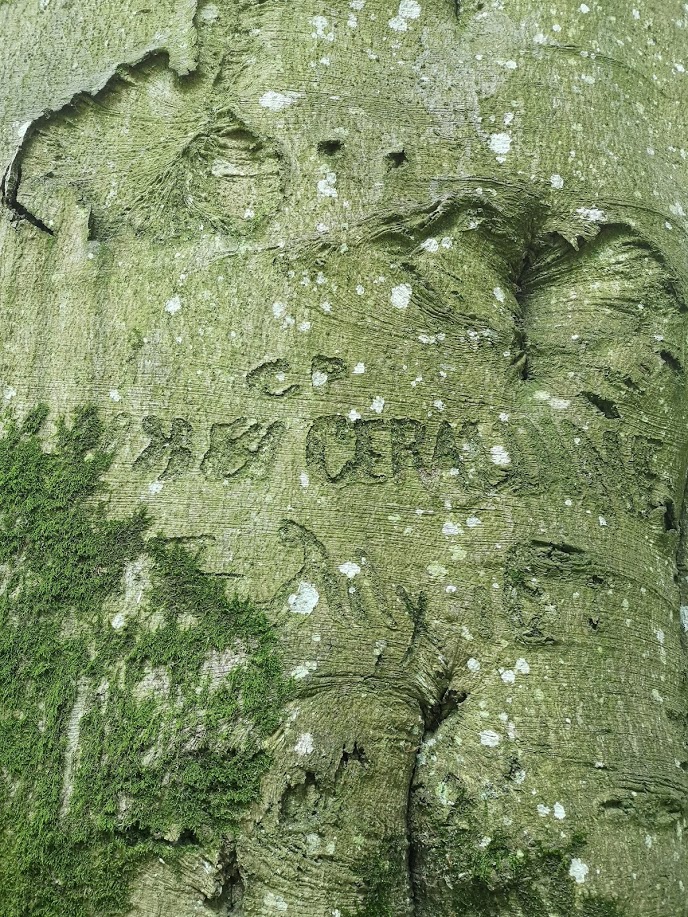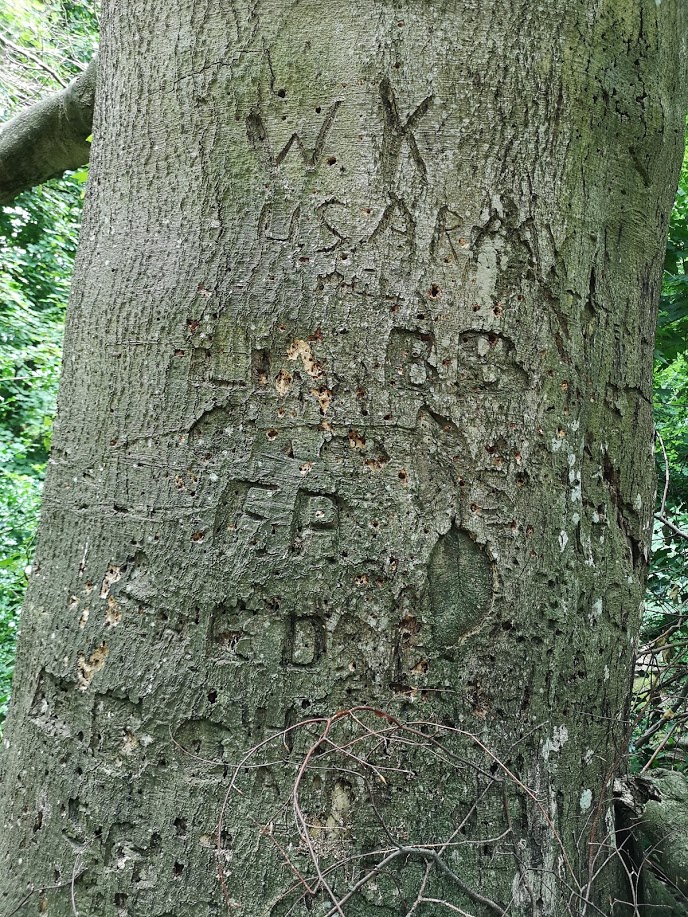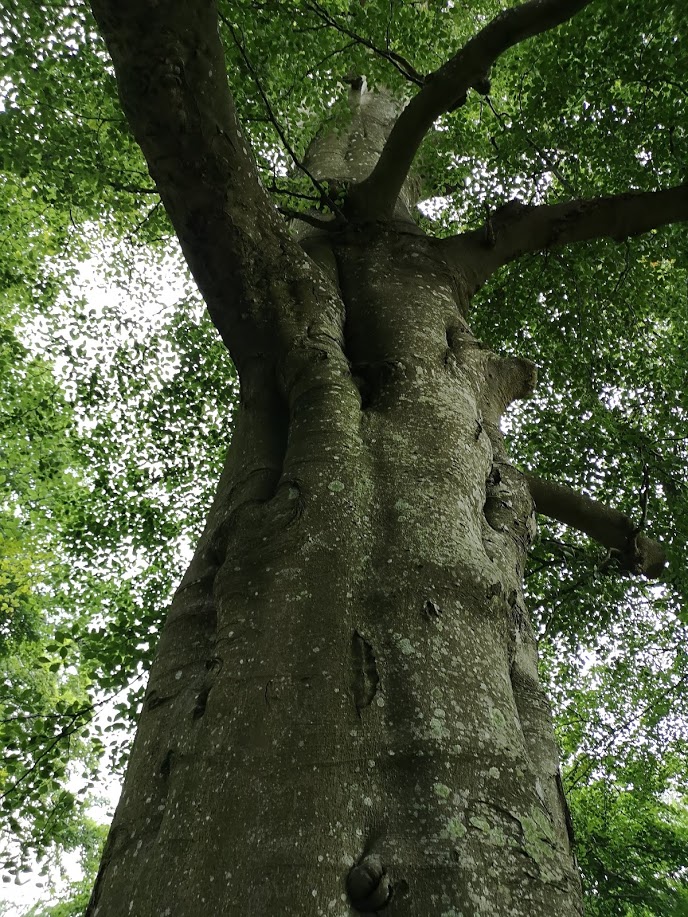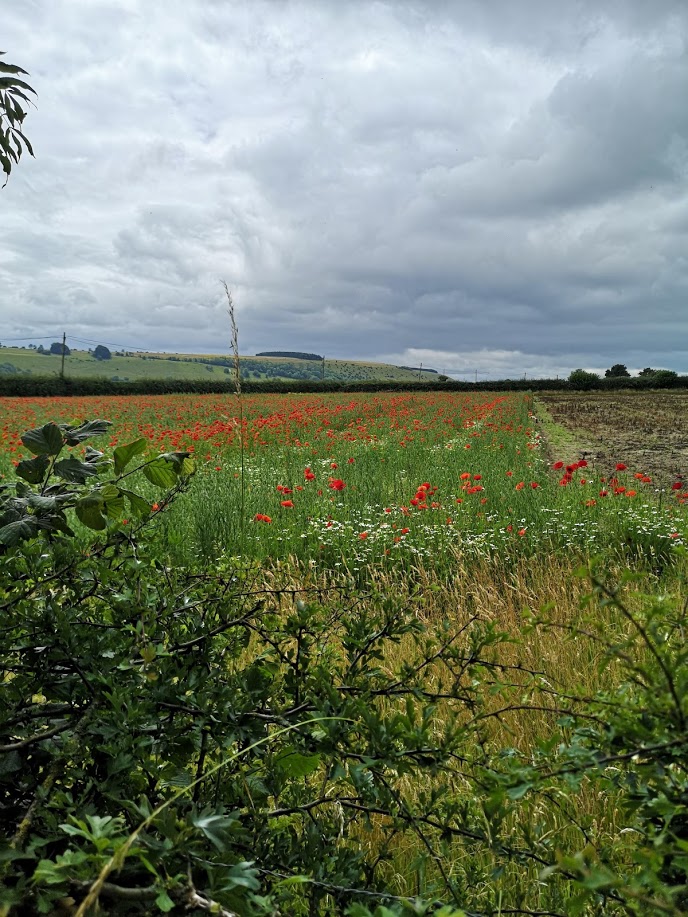I was fortunate recently to be taken to see some surviving tree carvings on private land at Compton Wood near the WW1 training and convalescent camp at Hurdcott, Wilts. Many of the carvings were said to date from this era. George Cross in his book & #39;Suffolk Punch& #39; George lived
at Compton Park in the 1930& #39;s, buying the estate from the Penruddocke& #39;s when their ownership of Compton Park came to an end after centuries following the death of two sons in the First World War (& a third son left so damaged by his war service that he was unable to take over
when his father died). George Cross writes: & #39;On a number of those elephantine beeches in Compton Park, probably planted before the discovery of Australia, are the names or initials, wrought with their own hands, of young men who came from that far distant land to give themselves
to the Empire in her hour of need. They were encamped in their thousands at the foot of the Wiltshire Downs, in Compton Chamberlayne & the adjoining parishes, & many a strong man& #39;s thoughts as he sauntered through the silent woods...must have turned to his dear ones,
& he felt irresistibly impelled to leave some record of himself before he faced annihilation. I wonder how many of those fine fellows are alive and well today? Of some hundreds of names & initials, many partly obliterated, I mention a few. C Delarvillers was no mean woodcarver.
R.M. of Sydney was madly in love with his Nina; her name in his hand is still all over the wood. I trust he survived & between them they now have grown up children. J.A.B. was a good designer as well as a carver; C.D. climbed twenty feet up the tree to leave his mark. C.A.W of
London, NSW, had a big bulbous heart; let& #39;s hope he proved a better lover than a woodcarver. Tom May - I suppose it is Tom May? - the design is ingenious but rather cryptic, is a man of ideas and if he lives has probably made a fortune. Pte G Penny & E.J. Rowlands were evidently
great chums. On the Downs overlooking the main road these handy lads outlined in the chalk, a map of Australia as large as St Paul& #39;s Cathedral, & although overgrown by grass it can still be clearly seen. It is said that some of the AIF...have, dead or alive, left their tangible
mark behind...& #39;
Sadly none of the above mentioned names were legible and no dates found in the carvings. Many of the immense beeches had fallen in recent years, but I am glad to have seen them and photographed them. I have found a George Penny & an Edward John Rowlands in the
Sadly none of the above mentioned names were legible and no dates found in the carvings. Many of the immense beeches had fallen in recent years, but I am glad to have seen them and photographed them. I have found a George Penny & an Edward John Rowlands in the

 Read on Twitter
Read on Twitter